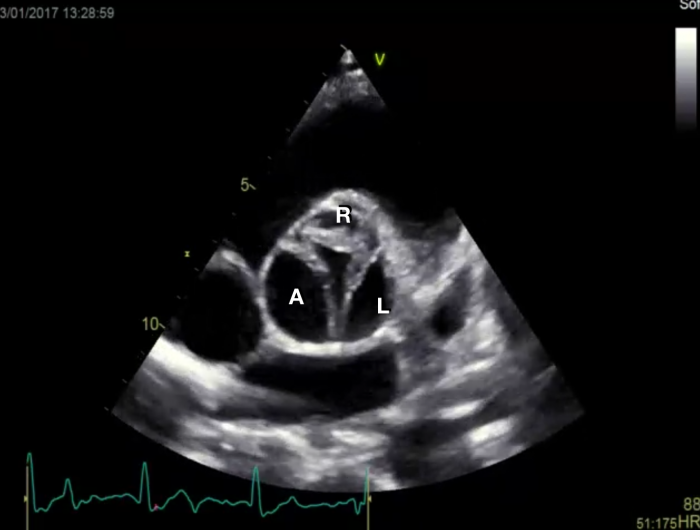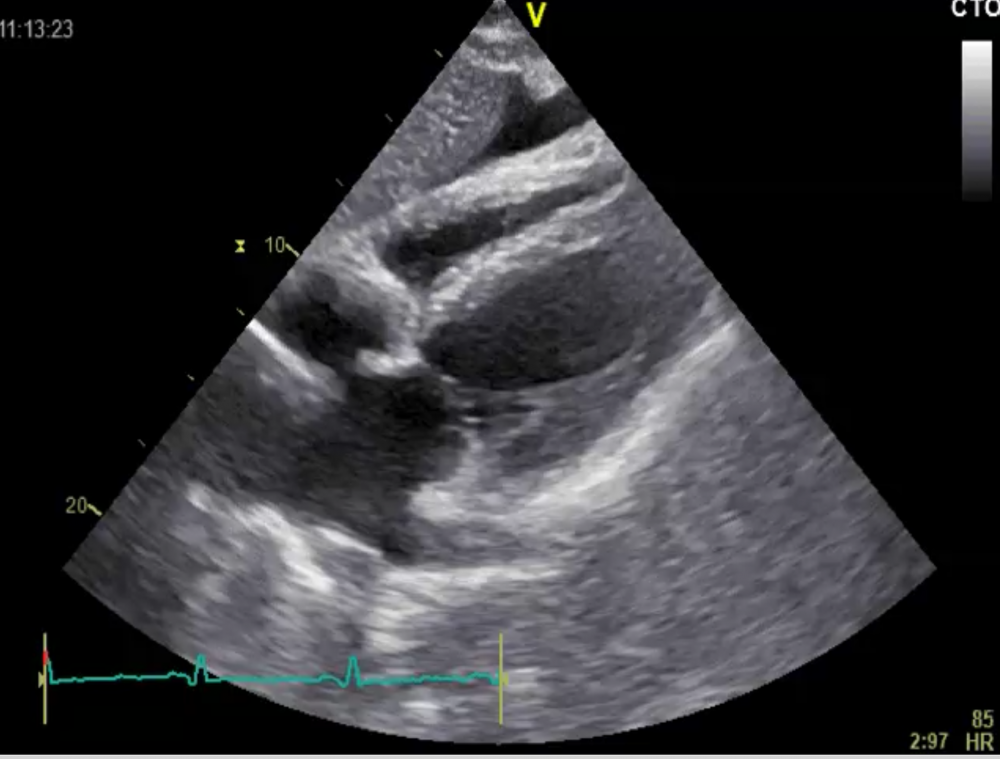Common mistakes - Echo Potpourri

To give warm you up for the topic here are a few things that I learned the hard way:
1) Fluid around the heart does not always mean that there is a pericardial effusion
Subcostal view demonstrating an echofree space adjacent to the right ventricleThis patient has ascites and not pericardial effusion – Note that the liver is “swimming” in the effusion.
2) Just because an aortic valve has three cusps does not mean that you can exclude a congenially abnormality

We call such valves also functional bicuspid valves. Sometimes you have to look really closely to see that a raphe is present. If you are not certain look for associated findings of bicuspid valves such valvular thickening, aortic regurgitation and a dilated ascending aorta.
3) The tricuspid valve is more apical than the mitral valve!
If you neglect this rule, you might miss a very important pathology: congenitally corrected transposition of the great arteries (ccTGA). Take a look at the following image loop:The right-sided valve (which we suspect to be the tricuspid valve) is NOT more apical than the mitral valve. But why? Well because it is NOT the tricuspid valve but the mitral valve. In ccTGA the ventricles (and the great vessels) are switched around. So what you see on the left is actually the right ventricle with the TV and the on the right you see the left ventricle with the mitral valve. See how the Aorta exits from the left ventricle (on the right). Are you now ready to learn from OUR mistakes?
Here is more on this topic:




